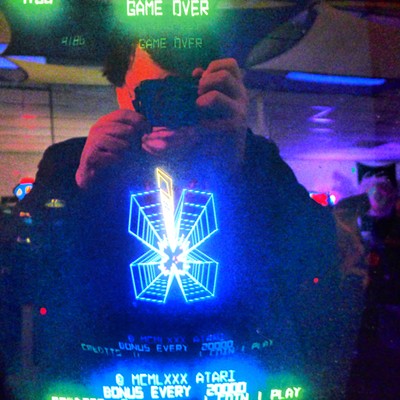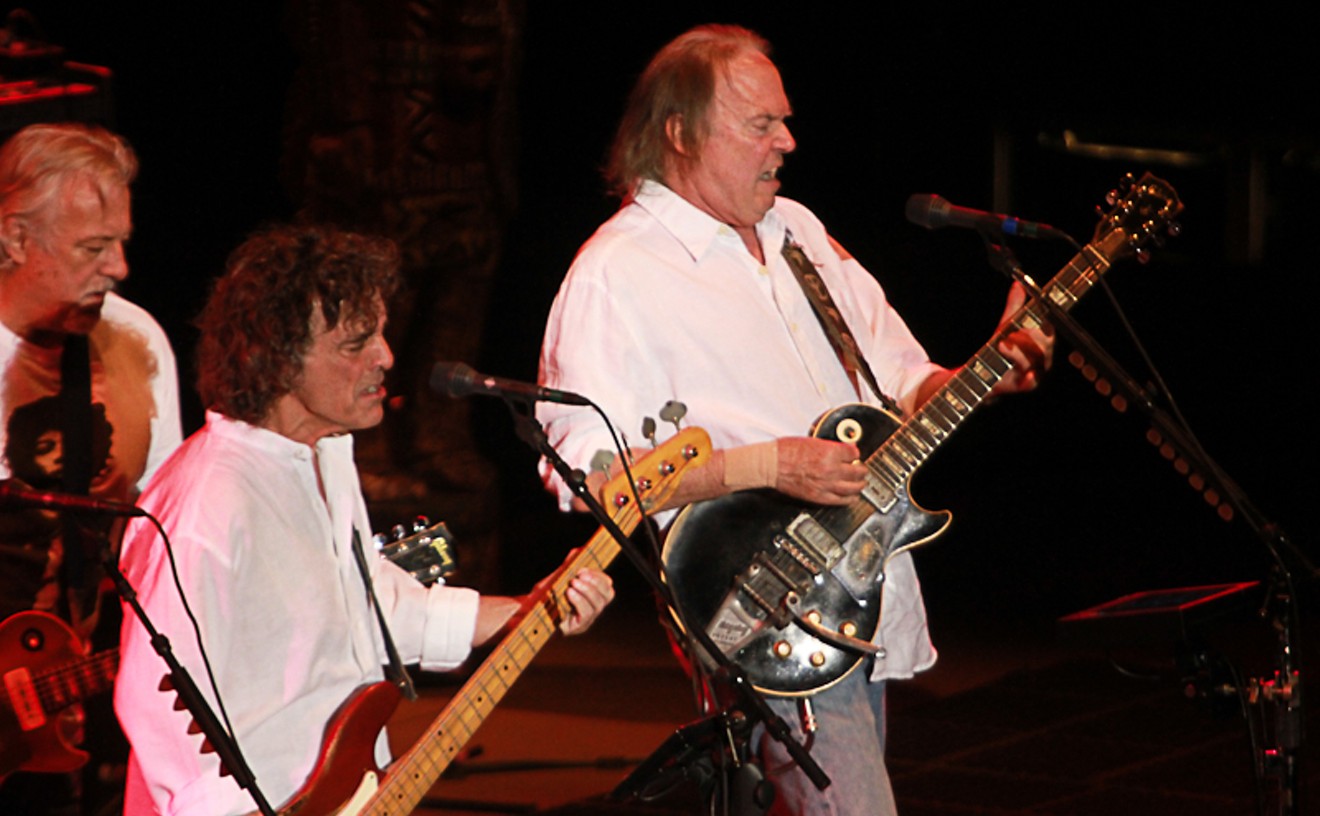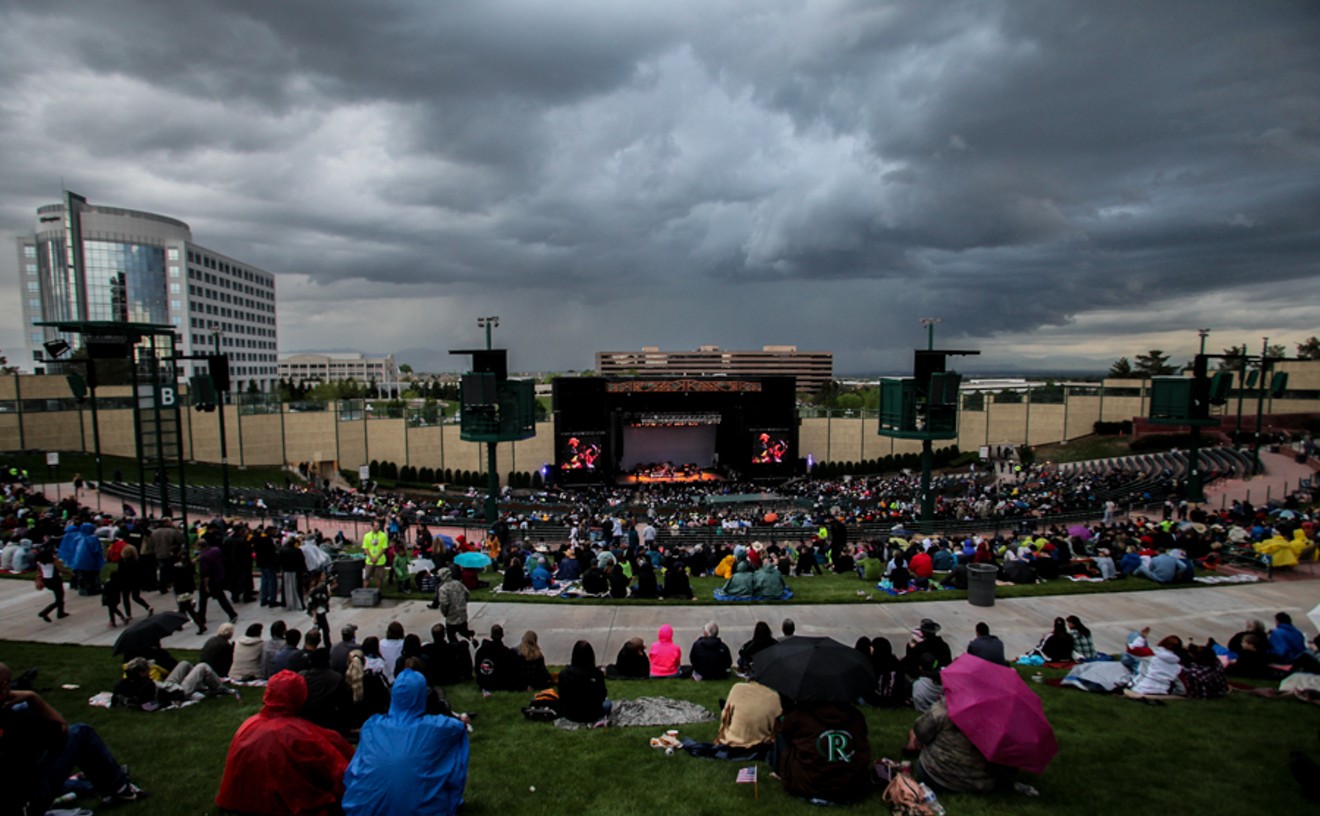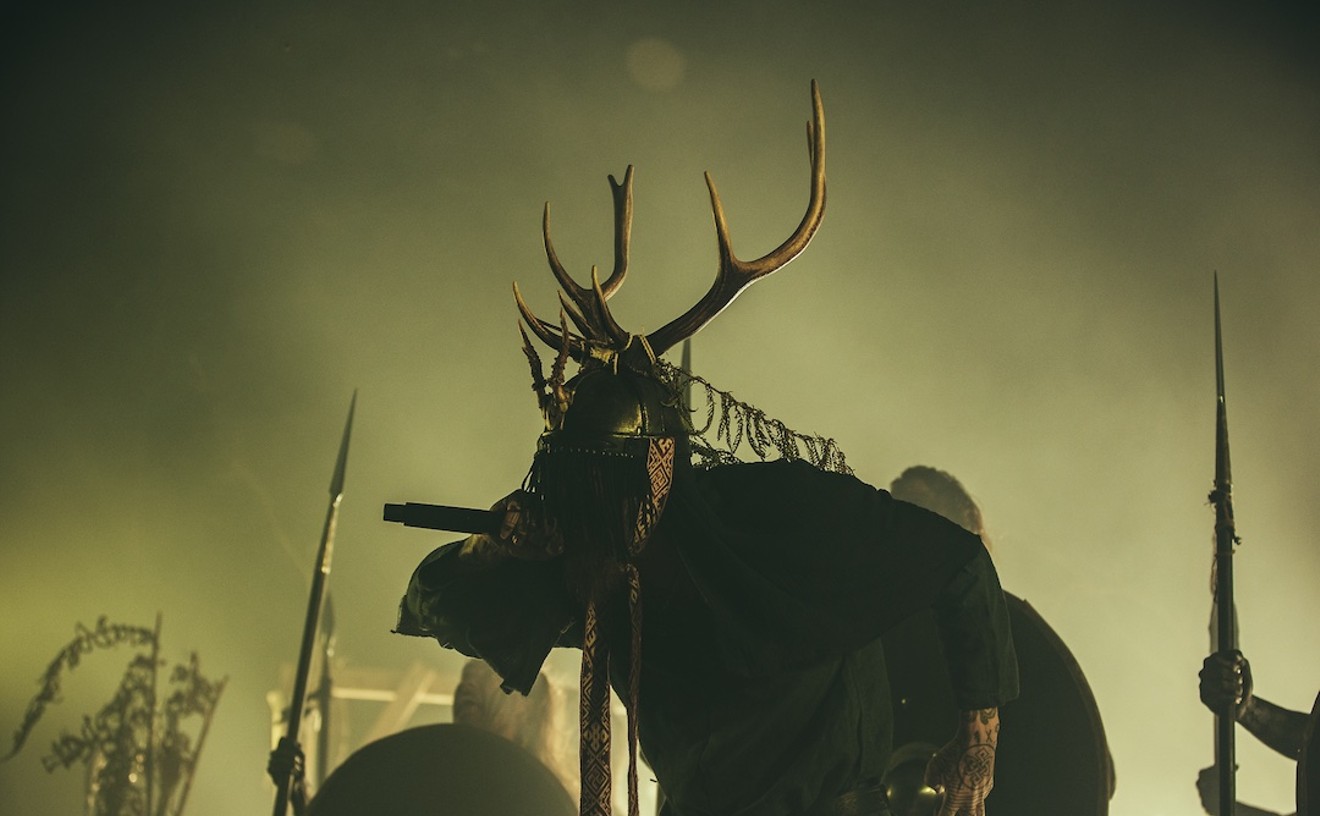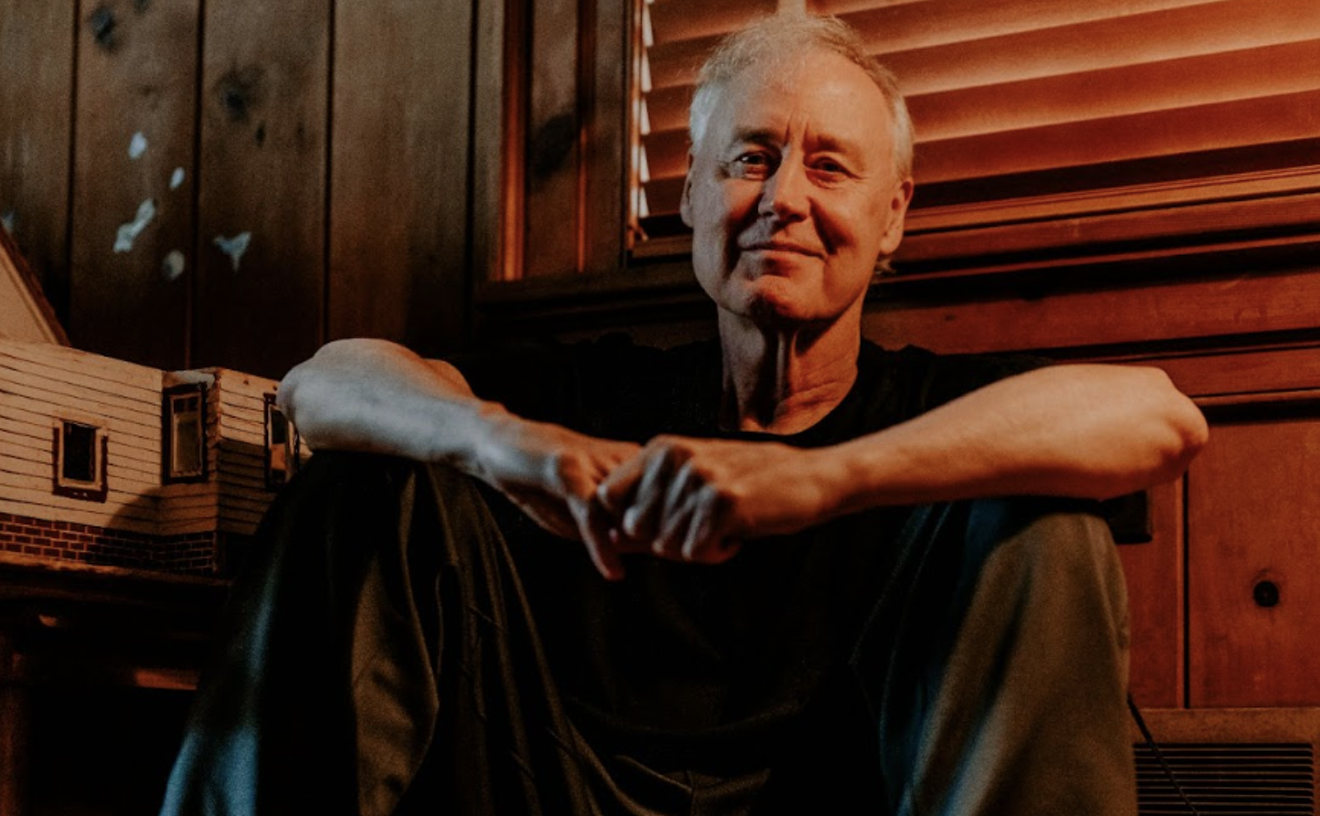THE HOWLING HEX @ HI-DIVE | 9/5/13 Neil Michael Hagerty didn't do too much physical emoting last night at the hi-dive, nor did the rest of the Howling Hex. But Hagerty projected his voice evocatively in an almost cartoonish fashion that matched his unusual guitar tones. Maybe he just EQ'd the sounds in an unorthodox fashion, or used his minimal effects toward a similar purpose.
See also: Howling Hex is another jewel in Neil Michael Hagerty's crown
Either way, the guitar sounded both cutting and playfully jittery in a way that recalled Brian Eno's Here Come the Warm Jets and Taking Tiger Mountain (By Strategy). There was also something about the sound that seemed to mock or satirize conventional Western tonal choices. The music was unlike anything anyone is doing, but also managed not to be so abstract as to be considered "experimental" in even that conventional sense.
Drummer Eric Van Leuven and bassist Eric Allen got quite the workout throughout the set because both had to keep a steady, precise and insistent rhythm. Allen got to play around with his rhythm from song to song, but Van Leuven's discipline at keeping such a simple yet strenuous beat was impressive. Most drummers would want to spread their rhythmic wings, but Van Leuven kept it spare and within tight boundaries, and that was part of the point of the music.
With Van Leuven and Allen keeping things spare and stead, Hagerty could let his own guitar work depart distinctly from the clipped rhythms he initially often played in each song, with his hands creating a fluttering howl with intricate finger tapping, for an effect like he was playing a different instrument entirely. Charles Ballas, meanwhile, unleashed a swarm of electronic insect and tiny bird noises on synth, giving each song a subtle level of texture, detail and atmosphere.
The overall effect of all the sounds brought together and working in tandem was something like psychedelia, if it wasn't based in the blues but rather in an alien musical language as if those aliens only ever heard the interstellar satellite transmissions from a Tejano station and did their best to incorporate those rhythms in the same way the Talking Heads wove African beats into their own compositions.
"Street Craps" was especially effective in highlighting the almost surreal nature of the music while also referencing Denver cultural features and landmarks. "Trashcan Bahamas," meanwhile, was like an upbeat Tejano pop song with an evolving melodic strategy across a repetitive rhythm that was ultimately hypnotic. The bizarrely playful "I Built a Friend" felt like a waltz played at a faster pace with a curiously scintillating guitar solo that sounded like the music bees would make if they could.
Yet for all its strangeness, it never felt like the Howling Hex was being weird for the sake of being weird, or even really trying to be weird. It was like a band adopting Tejano rhythmic aesthetics without entirely hijacking a form of music. And it was played in an individual way that some of us have come to associate with Hagerty's groundbreaking guitar work, except that he's effectively ditched most of what he's already done in other bands.
Earlier in the evening, a four-piece called the Salton Sea got things started. It seemed like there were three songwriting styles across the group's set; that can be very effective, and it certainly wasn't a bad thing here, but it made the performance segmented in a way that could be plotted out better in the set list.
There was the power pop flavor in the beginning that seemed to be a unifying element. But then there were the more rock and roll songs, including the closing number, which felt a bit like Spinal Tap's "Gimme Some Money," only sped up and more aggressive. This is not to say that the band was funny or silly because it wasn't. It's just that the final song happened to have a very similar rhythmic flourish between sections of the song.
Most of the set, in fact, was comprised of moody, psychedelic jams that recalled the guitar work of Pink Floyd, circa Meddle and The Dark Side of the Moon -- just that bluesy psychedelia that was in vogue in the '70s. It was a strong performance, but it could have benefited from a better sequencing of songs.
Personal Bias: I'm a longtime fan of Neil Michael Hagerty's musical works. Random Detail: Ran into Tommy Metz of Iuengliss and Ian Gassman of Confluence while at the show. By the Way: Some of the songs from The Best Of The Howling Hex are based on Neil Hagerty's experiences living in Denver. It's also not a typical "Best Of" album in that it's comprised of all new material.
Follow @Westword_Music


